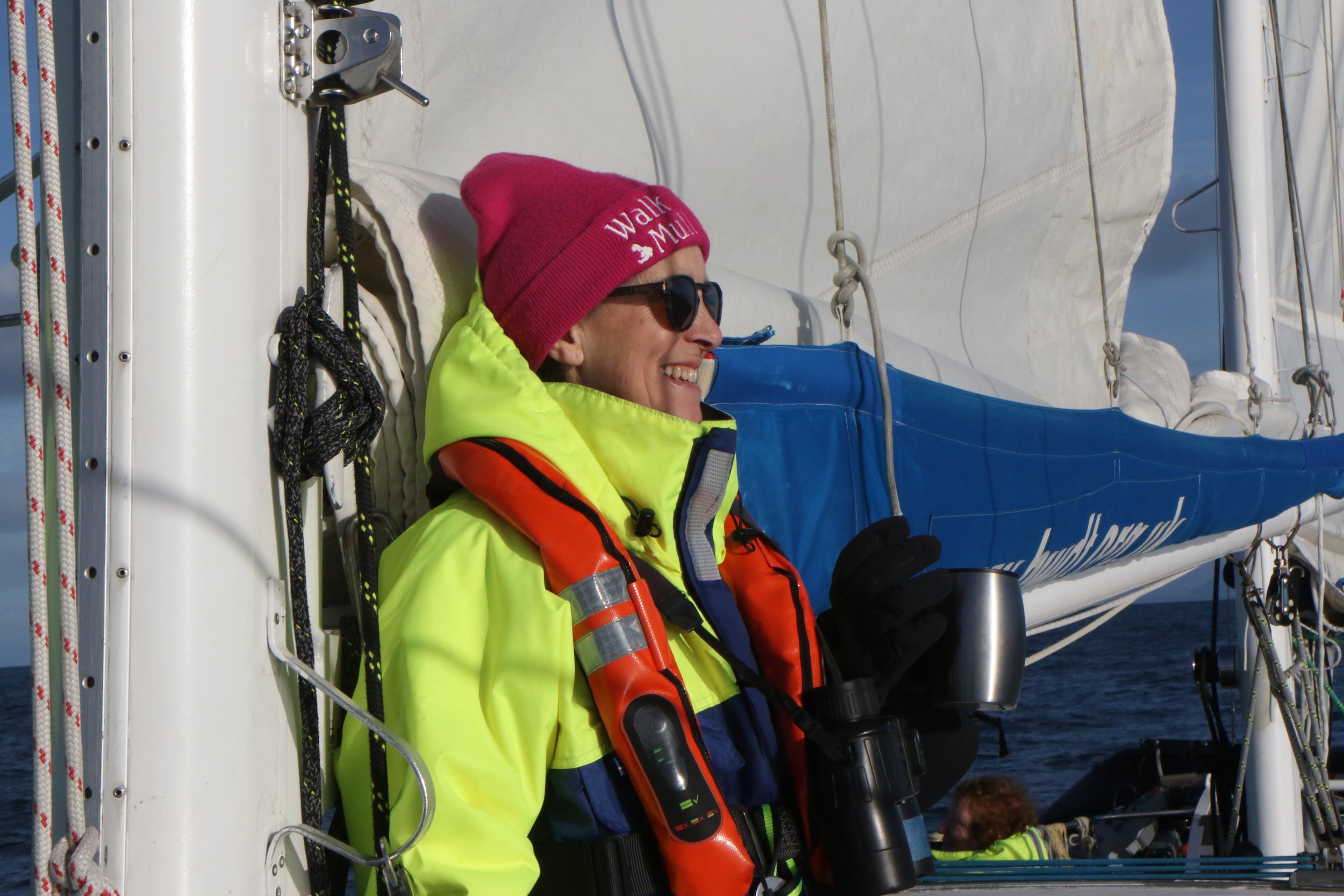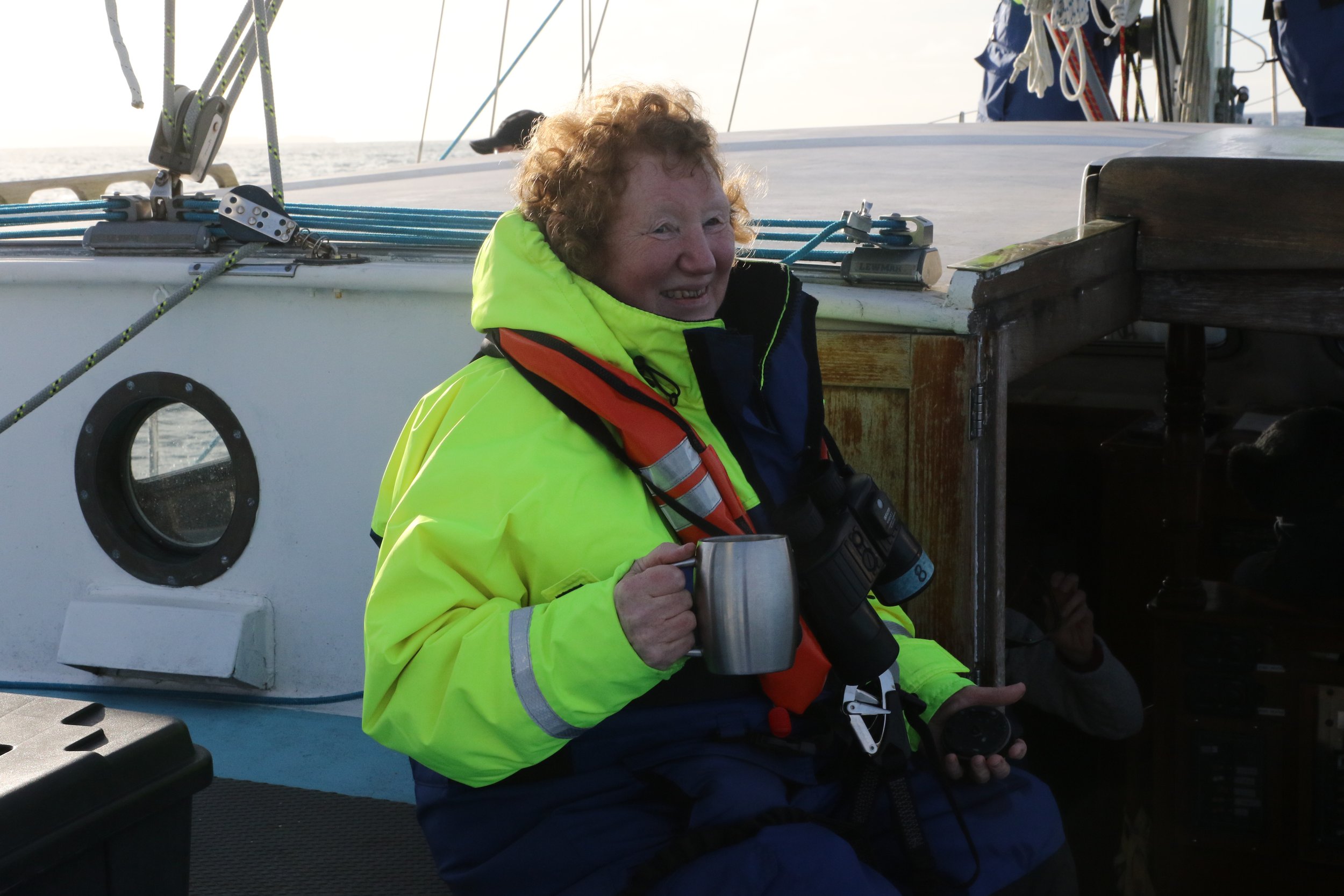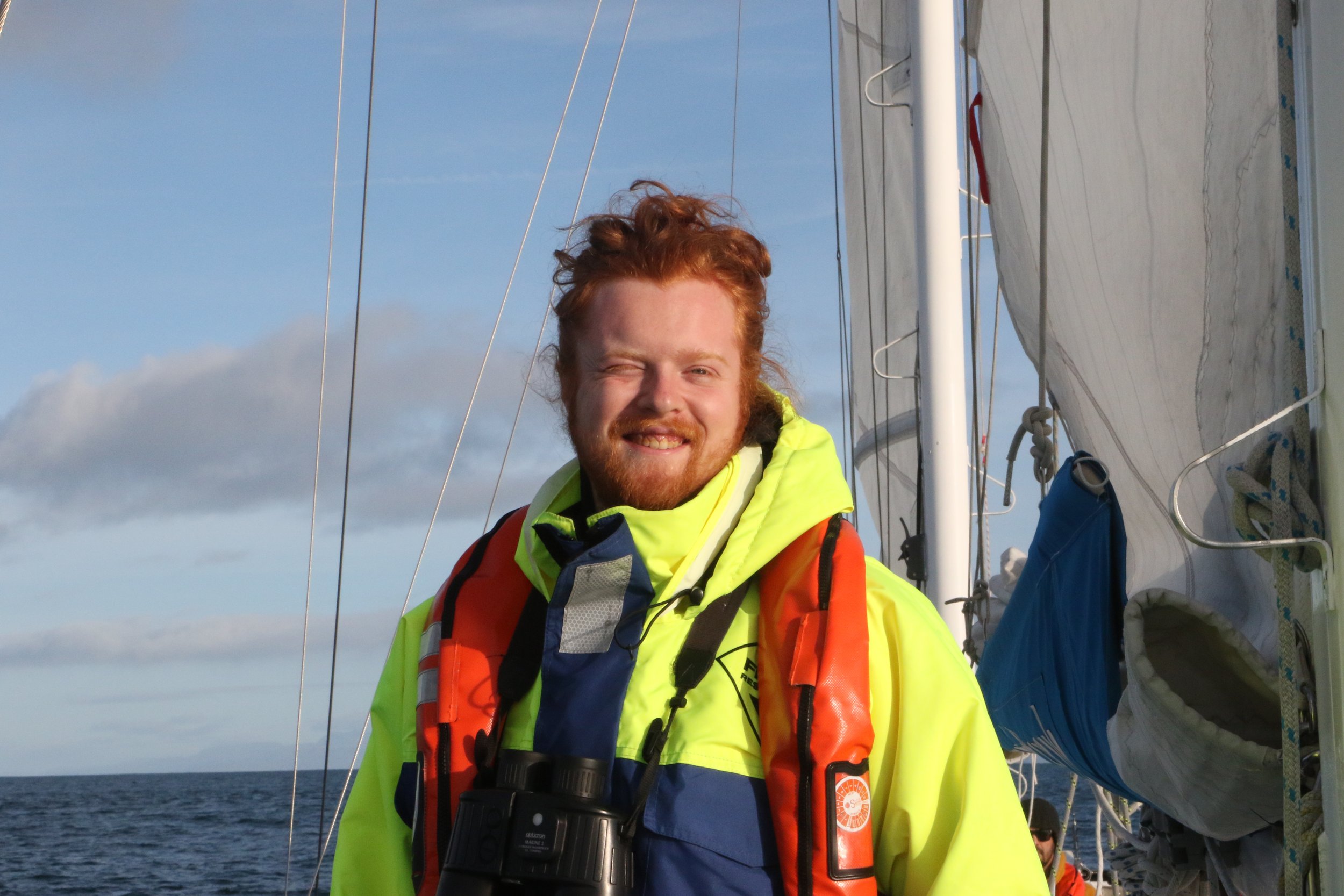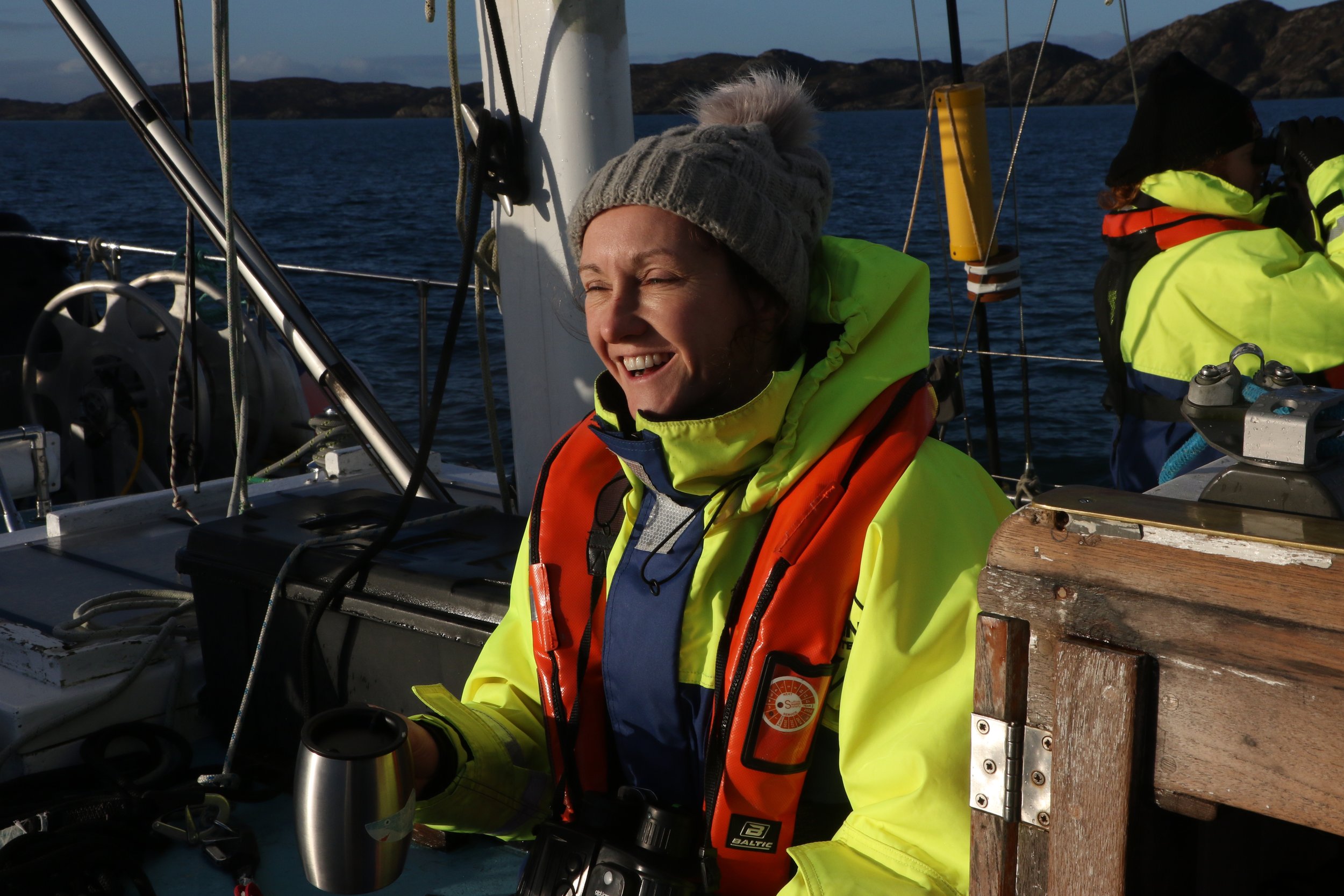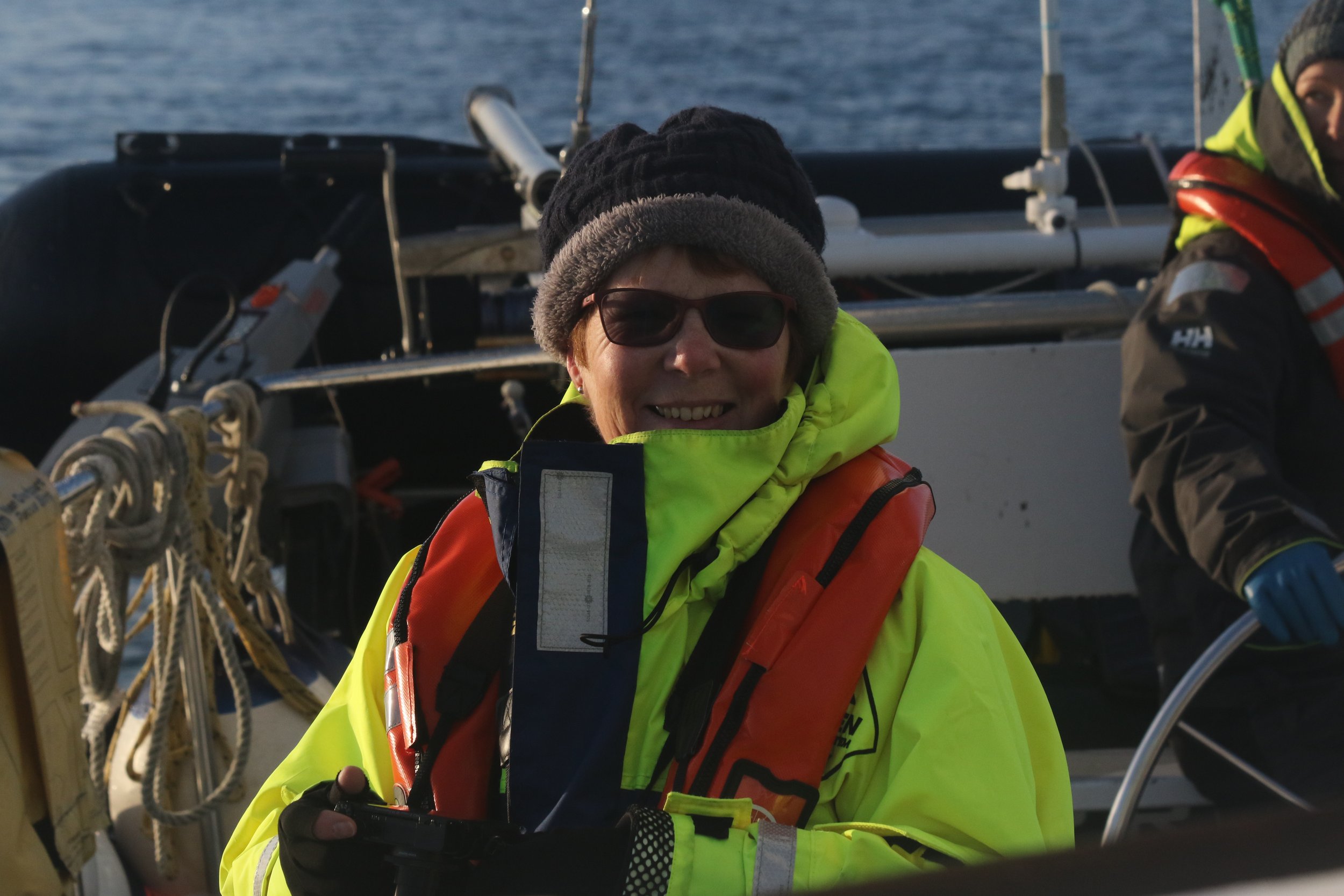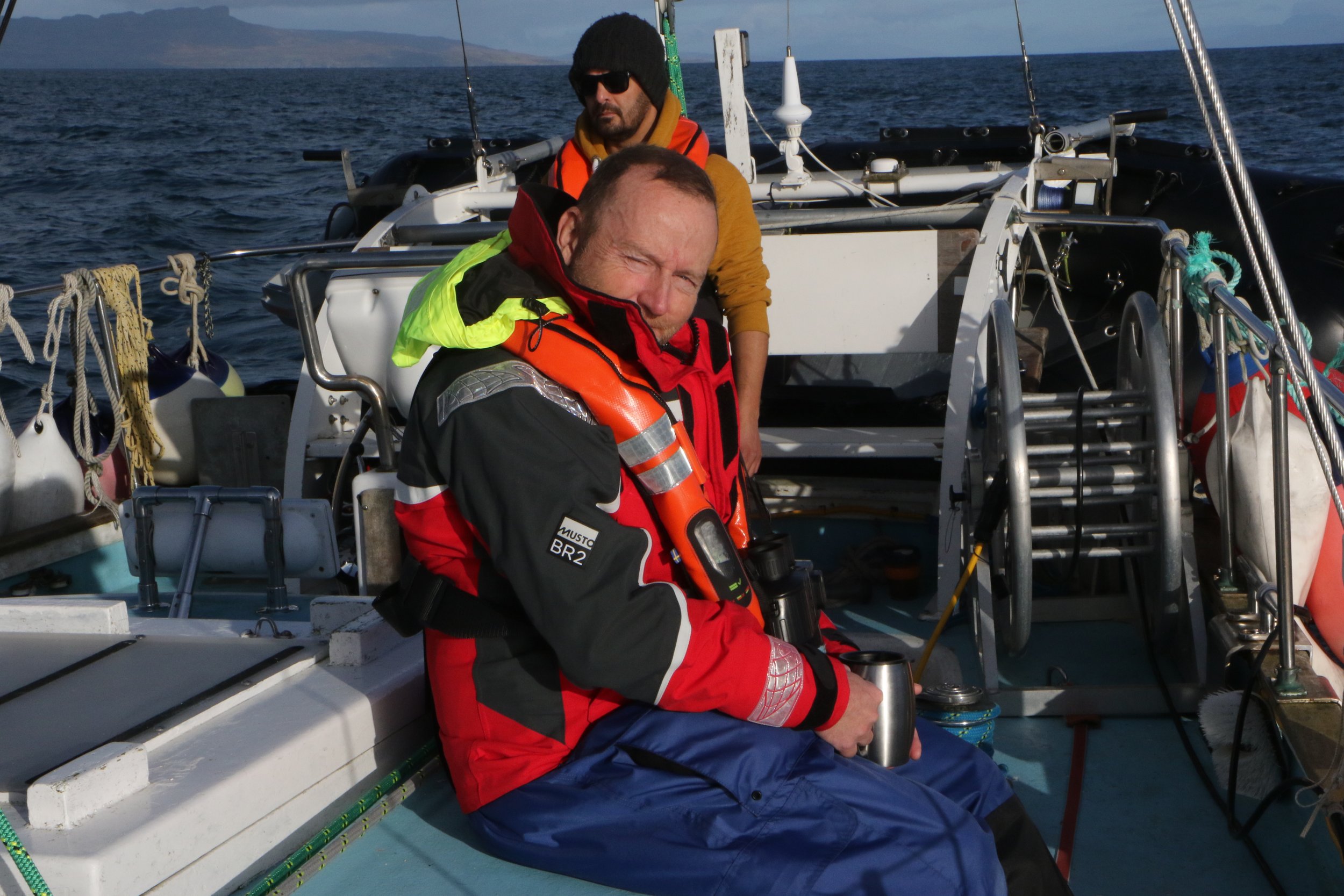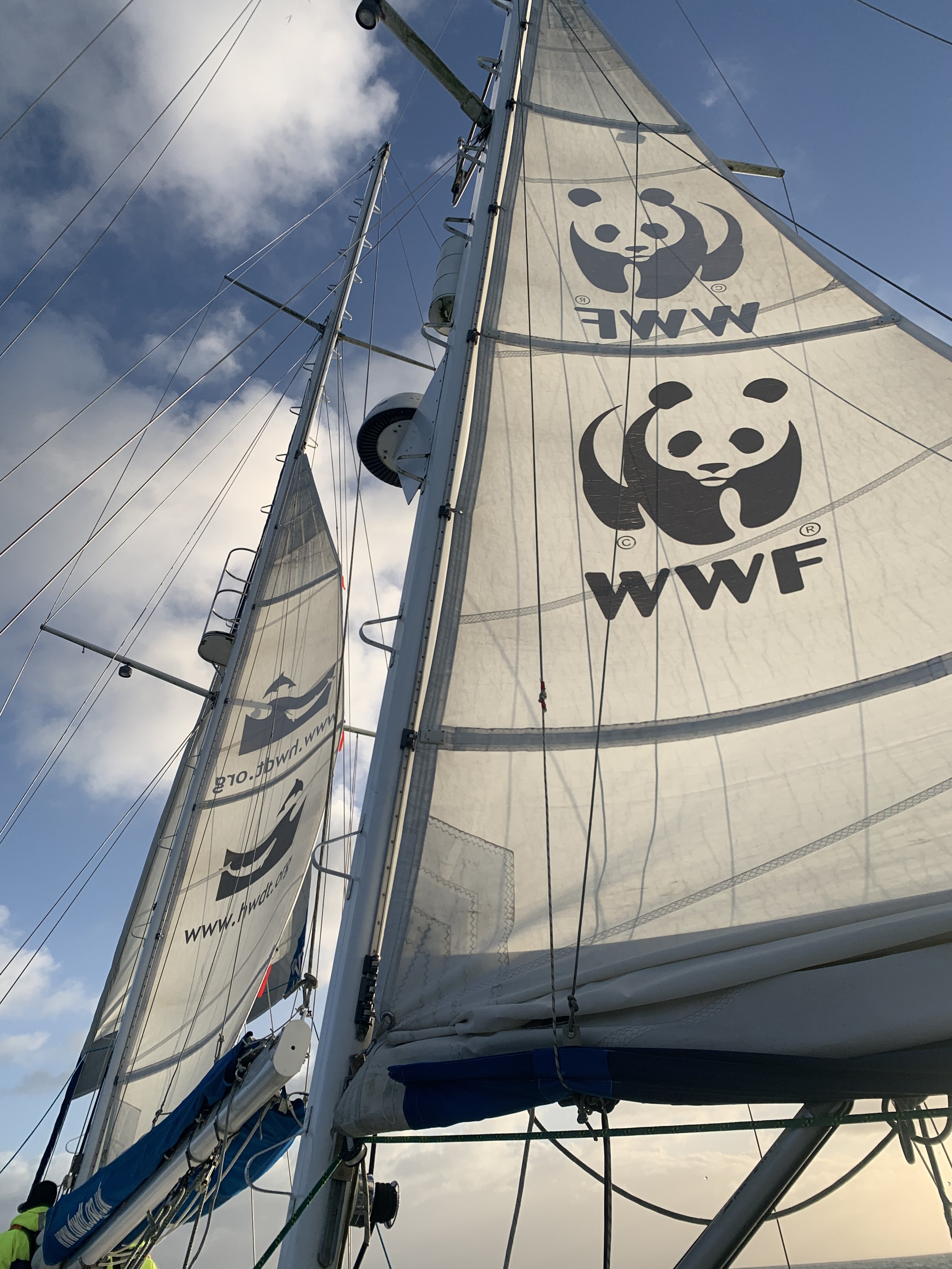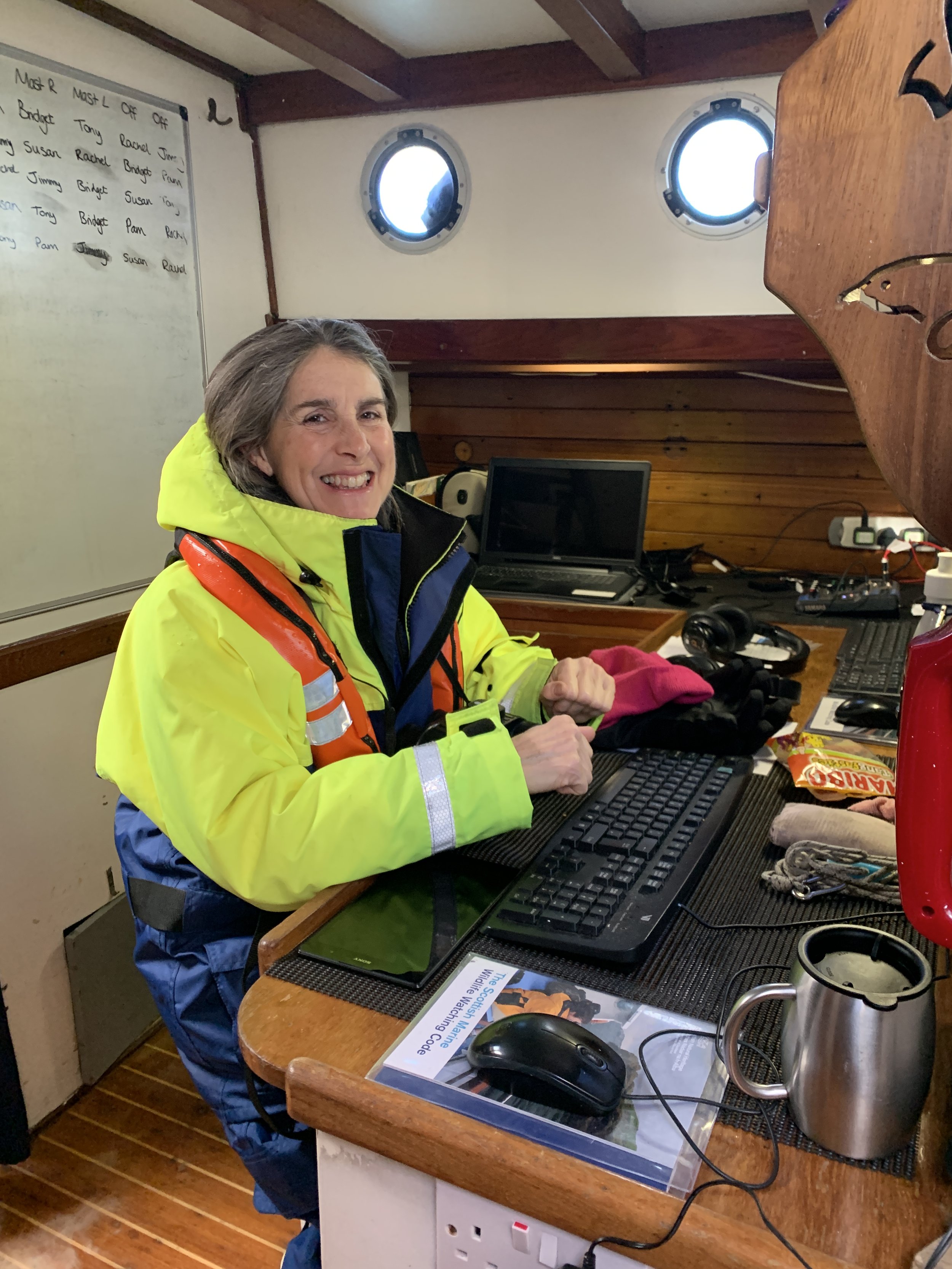Epic day of data collection onboard the first winter survey of 2023!
Our first winter research expedition of 2023 left Tobermory for a five-day survey, monitoring Hebridean waters to understand the YEAR-ROUND PRESENCE OF MARINE MAMMALS AND BASKING SHARKS. Here Hannah Lightley, Science Officer on board, recalls the trip…
DAY 1
Volunteers: Rachel, Jimmy, Susan, Tony, Bridget & Pam, arrived bright and early to board Silurian, HWDT’s research vessel. Ready to get started, our skipper Emma delivered a safety brief, first mate Lenny showed us around the interior and Hannah, our science officer, went over the data collection before we set off from Tobermory into the Sound of Mull.
The decision was made to head north towards the Isle of Rum, aiming to maximise survey coverage. Heading towards Ardmore we had a wonderful sighting of a white-tailed eagle that flew several meters in front of Silurian’s bow. Reaching Ardnamurchan Lighthouse in cloudy, drizzly weather, the swell began to pick up and it took a while for some of the volunteers to find their sea legs. Despite the challenging weather conditions, there were two sightings of grey seals and a well-spotted harbour porpoise amongst the waves. Seabirds were also out to play in the waves with kittiwakes, guillemots, razorbills, and large gulls added to the sightings list.
Motoring alongside the east coast of Eigg, the island provided some much-needed respite from the elements as we made our way across the Sound of Rum, before dropping anchor in Loch Scresort. Sightings for the day were limited, but the real achievement was made by those who initially struggled but were now gaining their sea legs, ready for tomorrow’s surveying!
DAY 2
After a very windy first night was spent in Loch Scresort - giving everyone a taste of boat life - we awoke having hardly moved (thanks to Emma’s excellent anchor drop) to a calm morning with views of Kinloch Castle and a tiny bit of blue sky!
Once out of the shelter of the anchorage and heading across to the Isle of Skye, the sea became quite rough, with swell of 1.5 metres. Maintaining ‘on effort’ is not easy such swell, but the group had found their sea legs, with some still managing to do their 30mins in the science station in ‘rolly’ conditions. Towards the Sound of Sleat the sea state and swell reduced as we approached more sheltered waters, but still no sightings. The rain lashed down as we surveyed Loch Hourn, requiring the use of safety glasses from the tool cupboard. It wasn’t until later in the day, as we headed back to Mallaig, that sightings of harbour porpoise and a grey seal were called, followed by a little dance on the mast lifting everyone spirits onboard.
Surveying stopped at around 4pm after battling winds, rain and swell. As the volunteers sat around the boat resting in the evening sunshine, Jimmy spotted splashing some distance away. A small pod of common dolphins came across to Silurian, dipped under the bow to check us out before heading into the distance – squeals of delight all round for recording our first dolphin of the year!
Safely moored in Mallaig harbour the volunteers went ashore to the pub leaving the crew onboard to cook a special Burns night supper of haggis, neeps and tatties with a splash of whisky! Emma performed a fantastic rendition of ‘Ode to the Haggis’ before tucking in, with tunes of Eddie Reader in the background.
DAY 3
The sun shining coupled with a light breeze made for a lovely departure from anchoarge, as we left Mallaig harbour escorted by a flock of Eider ducks. Heading towards Ardnamurchan, the morning was filled with creels, sea birds and sun - much to everyone’s surprise and delight. At Ardnamurchan we made a course change towards the Isle of Coll before turning again towards Caliach point and Treshnish on Mull.
Still no marine mammal sightings as we headed towards the Treshnish Isles, but the sea was calm, and Hannah was still not wearing a jacket so there were smiles all around. The bird numbers began to increase in the upwellings where tides joined and there was a sense of anticipation in the air! Surely enough, in quick succession three grey seals and two common seals were spotted and shouted from the mast. Volunteer Tony who was not on effort but resting near the helm, spotted a single porpoise off the stern of the boat, quickly followed by two more! This spot has now been coined ‘porpoise pew’ and we celebrated all these sightings with cake and chocolate mini eggs.
As the afternoon wore on, we headed from Staffa towards our anchorage at Bunessan, soaking up the evening sun and stunning views of the Treshnish Isles. Today was an epic day for data collection as we covered 45 nautical miles and conducted 7.5 hours of data collection - incredible for a winter survey, clocking more hours ‘on effort’ than some summer season days!
DAY 4
Leaving Bunessan bay, the water was flat calm - perfect for some early morning sightings! And just like that, as soon as we went ‘on effort’ creels were being called every few minutes, as well as sightings of an otter, two grey seals and one unknown creature! A busy first 30minutes for Susan below deck in the science station. Setting course for Iona, we stayed 1km from the shoreline admiring the views of the Ross including skipper Emma’s croft! Those in the science station, heard brief dolphin vocalisations from the hydrophone but sadly no visual sightings in the area.
Heading further into open water, the wind began to pick up increasing the sea state. This however was good news for sailing, as the wind behind us allowed for all three of Silurian’s sails to be set and to have enough speed to switch the engine off. Everyone enjoyed the peace and quiet of sailing, appreciating the power of wind and sail as well as no engine noise when conducting acoustic monitoring.
The wind and rain continued to increase and after 5 hours of data collection, the decision was made to head into our anchorage of Arnigour Bay on the Isle of Coll. Those on the bow enjoyed spotting the replica fin whale jawbone arch signalling our arrival into the bay. Once at anchor, volunteers enjoyed some down time including baking and sharing stories of life on Mull followed by a delicious evening meal and a few games of Bananagrams!
DAY 5
Breakfast was enjoyed on deck admiring the gorgeous sunrise, a perfect start to our final day of surveying. Once ‘on effort’ we began our journey back to Tobermory via the Cairns of Coll, spotting one common seal along the way. Entering the Sound of Mull with no further sightings, the sun came out from behind the clouds, a good omen for sure! With a cheese toastie in hand, passing Glengorm and Ardmore, those on the bow had become creel experts shouting the many encountered in this area as well as three sightings of harbour porpoise and an unknown sighting. Nearing Tobermory Lighthouse, a white-tailed eagle was expertly spotted perched on the rocky shallows at the entrance of Loch Sunart, giving all on board excellent views of this raptor basking in the sun. Our final record of the survey was a grey seal, before arriving back to the colourful town of Tobermory. The afternoon was spent cleaning and prepping the boat for winter maintenance followed by an evening meal to celebrate a very successful winter survey!
Across the 5 days, the group surveyed 191 nautical miles of Hebridean waters encountering 5 different species of marine mammal. These surveys are incredibly important as prior to the programme starting in 2019 very little winter data existed for the region.
Showing the track line of the area surveyed and sightings during HWDT 2023 WINT01.
Thanks to the fantastic team of volunteer citizen scientists who participated in the expedition. Every data point in our vast database is collected by you - members of the public! There are still a few spaces remaining on our 2023 Summer field season expeditions, follow the link below to join the adventure.
WE’D ALSO LIKE TO THANK NATURE SCOT FOR FUNDING THE WINTER PROGRAMME OF SURVEY WORK, BUILDING A MORE COMPREHENSIVE UNDERSTANDING OF THE HEBRIDEAN MARINE ENVIRONMENT.



